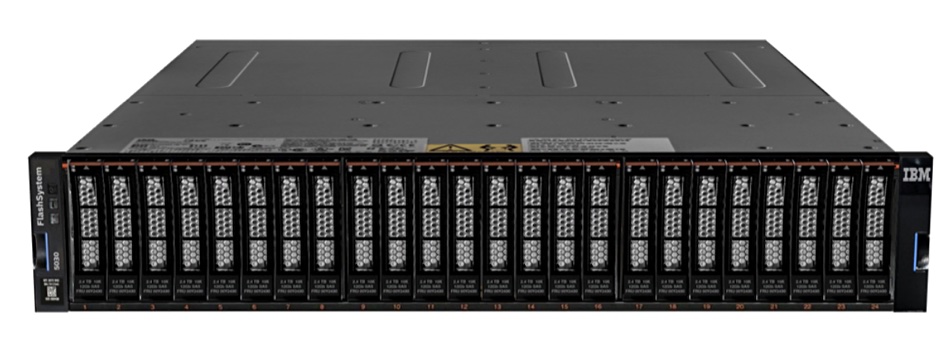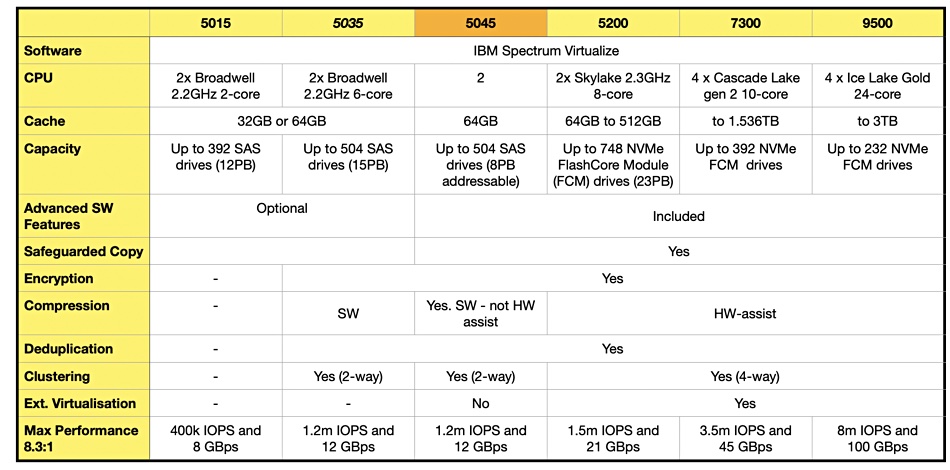IBM has upgraded its FlashSystem entry-level with a 5045 model to replace the 5035, adding immutable snapshots to improve its resilience against malware attacks.
These snapshots are IBM’s Safeguarded Copy (SGC) which lets you make regular immutable snapshots on the same storage as the production data. These copies can be instantly accessed to recover data, which is faster than carrying out a mass restoration from a backup target array, the public cloud or a tape library. The now superseded 5035 did not have this capability.

IBM principal storage technical specialist and master inventor Barry Whyte says in a blog post: “The 5045 is a natural evolution from the 5035 but also adds full feature licenses machine code. This simply means that all functions are included in the base license, so snapshots, replication etc all inclusive. In addition, Expert Care support bundles including Advanced are used to provide the hardware and software support over the life of the box.”
Whyte said that SCG has “the ability to integrate with external orchestration tools such as IBM Copy Services Manager or IBM Copy Data Management,” claiming that “ransomware protection is set and forget. Set up your policy, choose your frequency and retention period and the system takes care of the rest.”

An IBM Storage Sentinel facility, part of Its Cyber Vault technology, uses AI-driven scanning to look through these snapshots. It is “trained on specific application workload and access characteristics and can detect anomalies that would otherwise go undetected. Today Sentinel has native scan support for Epic (Cache/Iris), SAP HANA and recently Oracle.”

The 5045 supports 10 and 25Gb iSCSI, 16Gb Fibre Channel and 12Gb SAS connectivity inside its 2RU enclosure. Performance is rated at 12 million IOPS, 12 GBps bandwidth and under 70μs latency, the same as the prior 5035. We have tabulated its characteristics to show how it compares to the other FlashSystem models:

There are three standard configurations we have found listed by IBM. One has 12 x 3.84TB SSDs, meaning 46.1 TB raw capacity and 25TB of DRAID6 usable capacity. A second with 50TB usable capacity has 12 x 7.68TB SSDs; 92.2TB raw. A third has 10 x 15.36TB SSDs, meaning 153.6TB raw capacity and 100TB usable.
The maximum drive count using expansion chassis is 504, meaning a 7.74PB maximum raw capacity if 15.36TB drives are used.
The 25TB 5045 configuration is priced at £23,300 in the UK, $30,121 at a straight conversion. A 50TB config can be had for $43,500 in the US while the 100TB config is listed at $81,000.
Bootnote
Distributed RAID (DRAID) array configurations typically contain rebuild areas on the drives that are used to maintain redundancy after a drive failure. There are no hot-spare drives. Distributed RAID arrays provide better performance and rebuild times than hot-spare RAID arrays.








